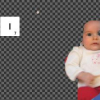Free Online Productivity Tools
i2Speak
i2Symbol
i2OCR
iTex2Img
iWeb2Print
iWeb2Shot
i2Type
iPdf2Split
iPdf2Merge
i2Bopomofo
i2Arabic
i2Style
i2Image
i2PDF
iLatex2Rtf
Sci2ools
CVPR
2010
IEEE
2010
IEEE
Analyzing Spatially-varying Blur
Blur is caused by a pixel receiving light from multiple scene points, and in many cases, such as object motion, the induced blur varies spatially across the image plane. However, the seemingly straight-forward task of estimating spatially-varying blur from a single image has proved hard to accomplish reliably. This work considers such blur and makes two contributions: a local blur cue that measures the likelihood of a small neighborhood being blurred by a candidate blur kernel; and an algorithm that, given an image, simultaneously selects a motion blur kernel and segments the region that it affects. The methods are shown to perform well on a diversity of images.
| Added | 31 Mar 2010 |
| Updated | 14 May 2010 |
| Type | Conference |
| Year | 2010 |
| Where | CVPR |
| Authors | Ayan Chakrabarti, Todd Zickler, William Freeman |
Comments (0)

